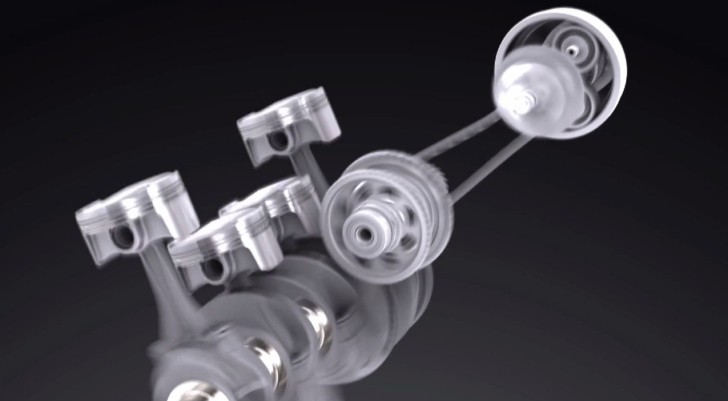Kawasaki has uploaded a new episode of the Ninja H2 saga, and this time it looks like things are slowly getting more technical, allowing riders who have been mesmerized by the 300 horsepower figure to get to understand the might of this bike better. After Akashi confirmed that the upcoming Ninja machine would be powered by a forced-induction engine imagination went amok, with either turbo or superchargers rumored.
Still, Kawasaki went for a crankshaft-driven supercharger solution, most likely because this system is not affected by the lag turbo-chargers have to deal with. Turbo systems are powered by the force of the exhaust gases, and since we’re dealing with fluids which care easily compressible, it doesn’t take a mechanical engineer to understand why this solution has a slower response.
On the other hand, gear/chain-driven superchargers come with an instantaneous response which varies with the engine revs. The drawback is that this forced induction method comes with an extra bulk for the engine, given the added weight of the step-up gear and the drive chain or supplemental gear. However, since Kawasaki’s Ninja H2 was all about explosive power surges at the twist of the throttle, the choice is only natural.
The H2 supercharger uses a step-up gear which links the bike’s crankshaft and the impeller assembly by means of a chain drive. At around 14,000 revs, the step-up gear rotates around 2,000 revs higher, driving a planetary gears system which in turn multiplies the rotation speed to around 130,000 rpm, creating a huge air pressure boost.
The compressed air is mixed with the right amount of atomized fuel and pushed into the 4 cylinders of the Ninja H2’s engine. From here, it’s elementary math: more fuel burned equals more power.
The H2, which is said to be the streetable version of the recently unveiled H2R track-only machine will most likely be equipped with a less powerful engine, but the performance and speed are expected to be stellar, nevertheless. Ninja H2 will be launched on November 4 at the EICMA in Milan, Italy and we’ll be there to provide you with live photos and reports.
On the other hand, gear/chain-driven superchargers come with an instantaneous response which varies with the engine revs. The drawback is that this forced induction method comes with an extra bulk for the engine, given the added weight of the step-up gear and the drive chain or supplemental gear. However, since Kawasaki’s Ninja H2 was all about explosive power surges at the twist of the throttle, the choice is only natural.
Planetary gear aircraft technology for 130,000 rpm
The house of Akashi is no stranger to high-tech engineering as Kawasaki Heavy Industries has a long history in developing and perfecting projects which were part of the mankind’s progress during the last 5 decades or so. And since the aircraft industry had been given a special place in the KHI roster, seeing the Ninja H2 sporting technologies derived from it should not surprise anyone.The H2 supercharger uses a step-up gear which links the bike’s crankshaft and the impeller assembly by means of a chain drive. At around 14,000 revs, the step-up gear rotates around 2,000 revs higher, driving a planetary gears system which in turn multiplies the rotation speed to around 130,000 rpm, creating a huge air pressure boost.
The compressed air is mixed with the right amount of atomized fuel and pushed into the 4 cylinders of the Ninja H2’s engine. From here, it’s elementary math: more fuel burned equals more power.
The H2, which is said to be the streetable version of the recently unveiled H2R track-only machine will most likely be equipped with a less powerful engine, but the performance and speed are expected to be stellar, nevertheless. Ninja H2 will be launched on November 4 at the EICMA in Milan, Italy and we’ll be there to provide you with live photos and reports.





